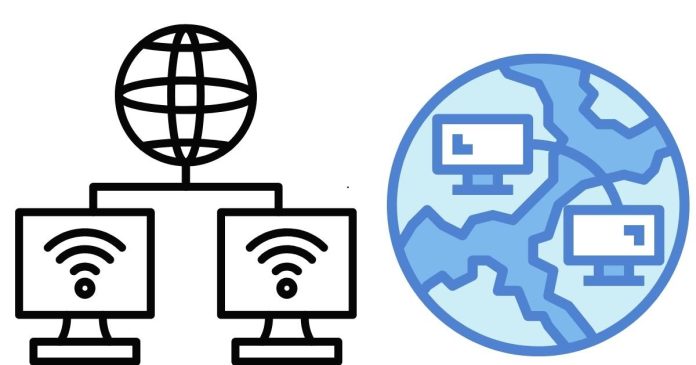When we talk about networks, two of the most common terms that come up are LAN (Local Area Network) and WAN (Wide Area Network). These networks are essential for enabling communication, sharing resources, and accessing information across multiple devices. However, they serve different purposes and have distinct characteristics. Understanding the difference between LAN and WAN is crucial for anyone working with or interested in networking technology.
What is a LAN?
A Local Area Network (LAN) is a network that is confined to a small geographic area, such as a home, office, or building. It connects devices like computers, printers, and servers within this limited area. LANs are typically used for sharing resources like files, printers, and internet connections, as well as enabling communication between devices.
Key Features of LAN:
- Small geographical area: Typically covers a single building or a group of nearby buildings.
- High data transfer speeds: LANs usually offer faster data transfer speeds due to the short distance and dedicated infrastructure.
- Ownership: LANs are usually owned, set up, and maintained by a single organization or individual.
- Cost-effective: Setting up and maintaining a LAN is generally more affordable compared to WANs.
- Common technologies: Ethernet and Wi-Fi are the most commonly used technologies for LANs.
What is a WAN?
A Wide Area Network (WAN), on the other hand, covers a much larger geographical area. It connects multiple LANs that are spread across cities, countries, or even continents. The internet itself is a prime example of a WAN, as it connects billions of devices worldwide. WANs are used by businesses and organizations to link their branches and allow communication between them, often through leased lines, satellite links, or public infrastructure like the internet.
Key Features of WAN:
- Large geographical area: WANs can span cities, countries, or even continents.
- Lower data transfer speeds: Due to the vast distances involved and the complexity of the infrastructure, WANs typically experience slower speeds than LANs.
- Ownership: WANs are not typically owned by one organization, but instead use infrastructure provided by third-party service providers like telecom companies.
- Higher cost: Setting up and maintaining a WAN can be expensive due to the distance and the need for specialized hardware and services.
- Common technologies: MPLS (Multiprotocol Label Switching), fiber optics, and satellite communication are commonly used in WANs.
Key Differences Between LAN and WAN
- Geographical Coverage:
- LAN: Limited to a small area such as a single building or campus.
- WAN: Covers large geographical areas, potentially spanning countries or even continents.
- Speed:
- LAN: Typically offers faster data transfer speeds due to short distances and dedicated infrastructure.
- WAN: Speed is usually slower due to the long distance and reliance on public or third-party infrastructure.
- Cost:
- LAN: Relatively low cost, as it is confined to a small area and does not require complex infrastructure.
- WAN: Higher cost due to the need for specialized infrastructure and longer distances.
- Ownership and Management:
- LAN: Owned and managed by a single entity (like an organization or individual).
- WAN: Usually managed by multiple entities, such as internet service providers (ISPs) or telecommunication companies.
- Connection Methods:
- LAN: Uses technologies like Ethernet cables, Wi-Fi, or other short-range wireless technologies.
- WAN: Uses leased lines, fiber optics, satellite, or public internet to connect remote LANs.
Conclusion
In essence, the primary difference between a LAN and a WAN lies in their geographical coverage and purpose. A LAN is suitable for local communication and resource sharing, making it ideal for home and office networks. A WAN, on the other hand, is designed to connect LANs over vast distances, enabling businesses and organizations to communicate and share information across the globe. Both networks are essential in the world of connectivity, each serving a unique role in keeping our digital world connected.


